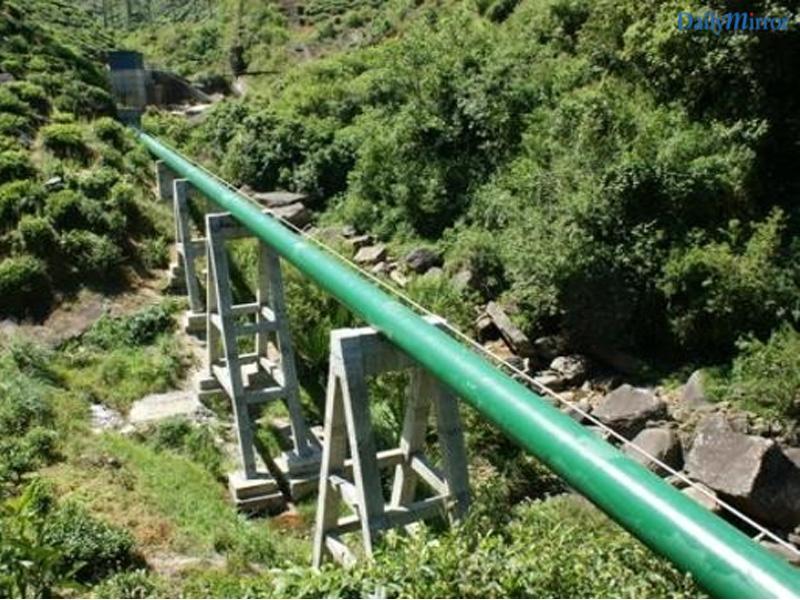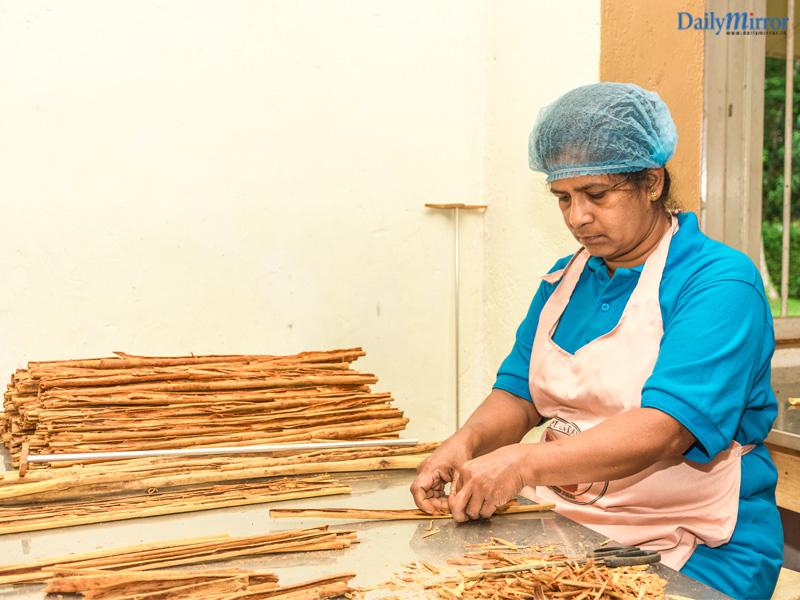27 Oct 2020 - {{hitsCtrl.values.hits}}
 Chairman of the Planters’ Association of Ceylon Bhathiya Bulumulla
Chairman of the Planters’ Association of Ceylon Bhathiya Bulumulla
In recent times, a great deal of ink has been spilled over the sport of identifying problems in Sri Lanka’s plantations sector, assigning blame. This is an approach which does little to solve the real underlying challenges that have held our industry, and our nation back for far too long.
The root cause of this failure is actually quite simple: we keep looking to the past and to present day bottlenecks instead of planning for the future. As the newly appointed Chairman of the Planters’ Association of Ceylon (PA), my goal is to fix this long standing issue.
In that spirit, let us set aside for a moment the seemingly intractable challenges we face today, and instead try to imagine what it could look like 10 years from now if we actually get our policies right today.
A typical day on a smart plantation in 2030
At sunrise, a worker prepares himself for another day in the fields. He checks his phone for an update on which estates require work. It’s a time of high cropping so his skills are in high demand. After checking on which fields are likely to give him the highest yield, he chooses a block that is not too far from home and drives to the estate on his motorbike. As he drives through the gates, his ID-tag registers him as he enters the estate and the field he has been assigned to.
The block that he picks has been designated as a two-man harvesting job. As he waits a moment to link up with his partner harvester, he waves at a group of his friends who are part of the pruning team that have already finished up tasks in this estate and are moving their pruning machines back into their small truck which has been provided by the RPC, as they move onto their next job for the day.
Drones are buzzing around the estates, spraying pesticides and weedicides a few fields down the road, while the field that he is about to enter is being mapped for its soil composition in order for the RPC’s systems to determine what nutrients are specifically required to make his block yield even more harvest.

After his partner arrives, they collect their two-man sheering machine and start harvesting. Within a few hours, they have hit their norm according to the weight sensors embedded in their collection bags. Everything they collect after this is a bonus. As he is verifying their harvest, he gets a notification telling him that some of the estate’s other crops in a Berry Project, another Horticulture farm, Floriculture farm, etc– are also in need of harvesting. This is a lucrative opportunity, so he eagerly accepts the job and heads over to the greenhouses after his lunch break.
A few hours of harvesting later, he calls it a day and drives over to the factory to meet with his girlfriend who is almost done with her job of overseeing the estate’s hydro and solar power mix. As they both head into the city to grab a meal and wind down, he gets another notification that his payment for the day’s work has been wired to his account. He sets some aside for his savings towards improving his home and buying a small car, and heads home for a well-earned night’s rest.
A dream that is well within reach
Especially for our most vociferous critics, all of what has just been described may sound like a flight of fancy, but the truth is that all of what has been described is not just possible, all of it - from Near Field Communication (NFC) ID cards that are linked to a worker’s performance via Enterprise Resource Planning (ERP) systems , to soil mapping using drones, independent teams of workers and machine operators carrying out field work, the use of harvesting machines, solar and mini-hydro projects, and even the extremely lucrative diversifications into areas such as berry cultivation, horticulture and floriculture – are not some distant dream a decade into the future, but something that is already happening on certain RPC estates right now.
Instead of getting locked into a totally unsustainable present day, it should now be the utmost priority of all RPCs, the Government, Trade Unions and every single stakeholder in our industry to work in collaboration to support and encourage these developments to now be shared across the entire sector, in order to enable each RPC to maximize profits and pursue opportunities which suit their individual strengths.

Only by expanding these pioneering innovations across the entire industry can we secure a truly sustainable future that benefits our employees and their communities, while simultaneously contributing to the development of the national economy, and setting global benchmarks in human development and technologically augmented agriculture.
In this journey, it would be foolhardy to disregard the role of RPCs whose management and expertise have been essential in securing all of the progress we have achieved up to now. Instead, our contributions ought to be recognized and celebrated. Of course there are those who have not yet lived up to their full potential; this is true of some RPCs just as it is true of those in their workforce and the entire nation. In such instances, discussions must now take place as to what corrective measures would help others in the industry reach a sustainable trajectory.
True sustainability requires a new earnings model
To the extent that we cannot seem to reach consensus, the blame falls not on a single party – neither the Regional Plantation Companies, various other producers, the workers and Trade Unions, or the Government - but rather on a structure of poorly conceived incentives established and rigidly enforced for over 150 years.
Some view this increasing dysfunction as the precursor to collapse. If we continue to ignore the problems at hand and refuse to entertain the possibility of radical change, collapse and economic ruin is the only possible outcome but this future is not set in stone, and we believe that the challenges we face today could be the painful but necessary first steps towards true, sustainable growth.
At the root of these challenges is the ancient and extremely outdated daily wage model. This is not a matter that requires any further debate. It is a well settled fact. Sri Lankan RPC plantations have the lowest productivity in the world, and that is because productivity is simply not incentivized.
Those who seek to argue with this iron-clad fact need only look at the highly successful tea smallholder model which pays employees a flat rate of Rs. 30 per kilogram of tea harvested from much smaller fields. In such cases, harvesters consistently secure yields well in excess of 30 kilograms, translating to a daily earning in excess of Rs. 1,000 right now. Each rupee earned is determined by the amount of tea harvested.

Naysayers would claim that ownership of the land is the difference here, but even that is not true because in many instances smallholder plots are owned by one individual who contracts a family to live and work on the land and tend to its harvest.
Therefore any stakeholder that wishes to advocate for a path of earning more than Rs. 1,000 per day, need only look at the smallholder model. Crucially, this model, which all agree, works given the success of the smallholder sector as a whole - pays less per kg than productivity linked proposals that have been advanced by RPCs.
To reiterate: the only meaningful difference between the smallholder sector model and those proposed by RPCs, is that we will pay more per kg than smallholders, while ensuring that Employees’ Provident Fund and Gratuity payments are also completed, and providing housing, healthcare and other essential assistance – all benefits which are not provided to smallholders, who account for over 70% of all tea produced in Sri Lanka.
Opposition for its own sake
Earnings that are linked to performance is the only model that has been proven to work in tea and any other comparable industry. This is true across the globe and true in the smallholder sector in this very country, just as it is true in almost every other sector in the economy from apparel to hospitality, insurance and sales. Why then can we not agree that we link RPC plantation worker earnings to their performance and in the process, create a pathway for workers to earn more?
Here too the truth has been muddied and mangled in contradictory statements by certain stakeholders that seek to assign blame solely onto RPCs. One need only compare positions taken by Trade Unions in the previous amendments to the Collective Agreement (CA) and statements now being made to see these contradictions laid bare.
In 2016, the CA was amended to include productivity links and it was Trade Unions that had expressly demanded their removal from the last CA of 2018. This fact was expressly stated in the amendment itself. Today the tune has changed again and it is now Trade Unions that are demanding that attendance and productivity incentives be included – despite opposing it after 2016, and successfully removing it in 2018.
Throughout, it is RPCs that are being targeted and slandered as being “unable to pay” a flat basic wage of Rs. 1,000 and therefore being responsible for low worker earnings. This despite our industry having consistently advocated for productivity linked earnings that can open a pathway to earnings well in excess of this demand for more than a decade. Given that the models we are proposing can boost worker earnings potential well in excess of Rs. 1,000, it is inaccurate and totally unfair to accuse RPCs of opposing the Rs. 1,000 campaign. Not only do we not oppose it, we are confident we can do better.
Our approach will enable workers to earn more than Rs. 1,000 – which is an objectively stronger offer than a flat basic wage of Rs. 1,000. The harvesters, and workers who perform want this and it is what has been effective in the smallholder sector – which means it is a system proven beyond any reasonable doubt to work for almost 2/3rds of all tea production in Sri Lanka. We are simply asking that it be applied evenly to the remainder. Why would anyone oppose this?


23 Dec 2024 4 hours ago
23 Dec 2024 5 hours ago
23 Dec 2024 8 hours ago
23 Dec 2024 23 Dec 2024